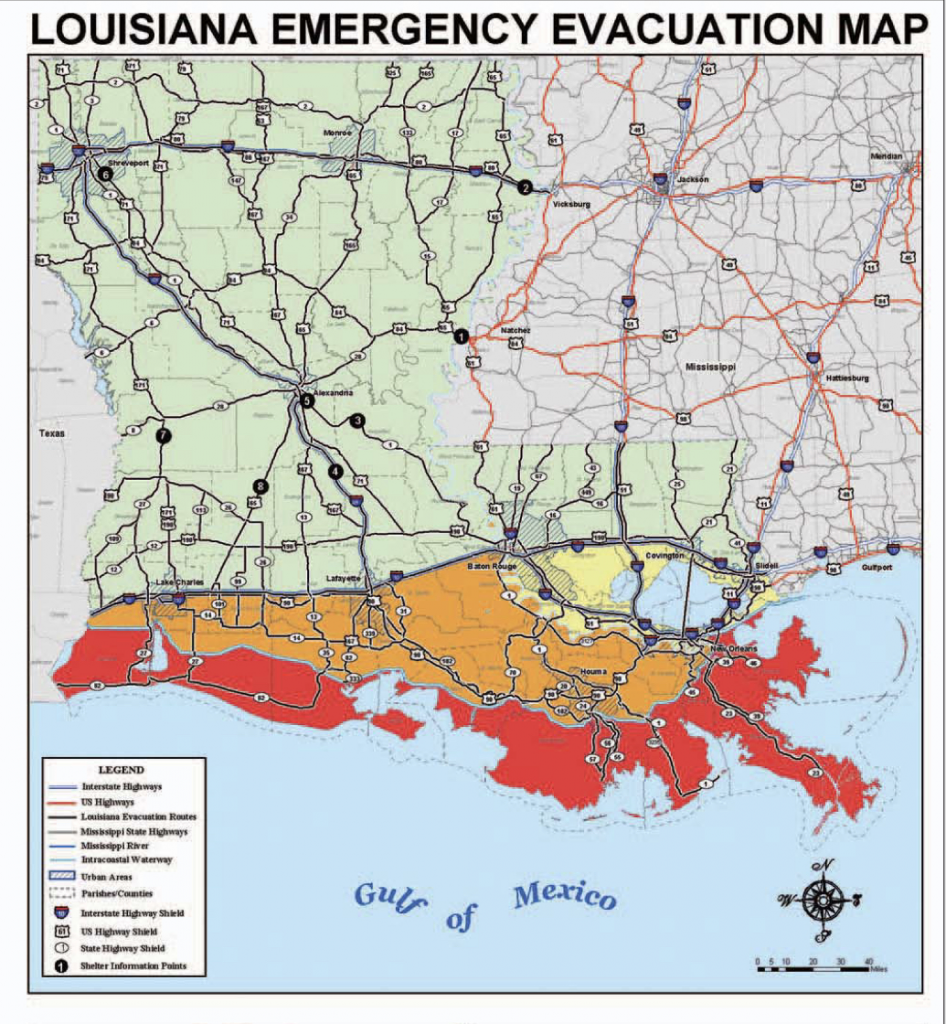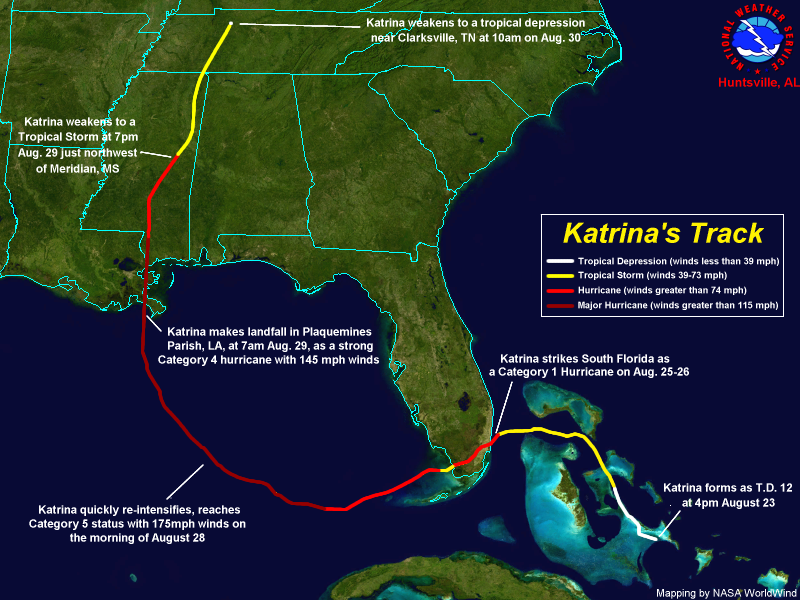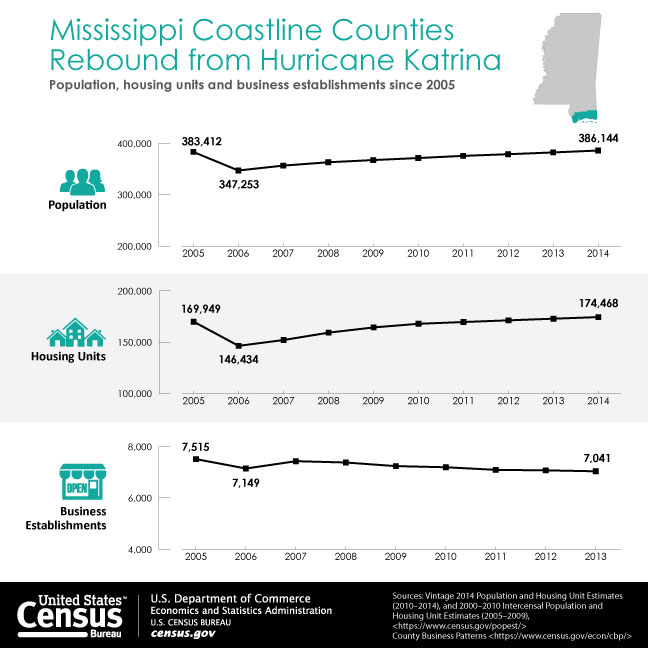DigitalProject #3
Different groups would be affected differently if they received different amounts of care, support, and aid. We created data sets using voyant, and with these data sets, we analyzed these phrases that were used most and how they were used.

During and even after hurricane Katrina it was apparent that different areas were prioritized over others when it came to the aid, care, and support they would receive and when they would get it. The lack of these things in rural areas was made devastatingly clear when we saw that people were fighting to save their own lives and survive in the aftermath like Esch and her family had to do. When Katrina occurred, Esch and her family experienced a regime shift, and the lack of support left their survival in the hands of the people outside the community of Bois Sauvage.
How long did it take Federal help take to get to the local level to help families like Esch’s?
The government claimed that it had done a lot in response to hurricane Katrina, but It can be seen that the precautions they had for the storm were not effective. In the days that it took for hurricane Katrina to completely destroy the coast the government would sit and watch. It wouldn’t be for another two days after Katrina made landfall that President Bush would hold a cabinet meeting to speak about federal relief efforts. The government sent out FEMA as well as the Coast Guard to perform search and rescue. The length of time it took for federal aid to get to the local scale was an unknown number, because of the storm the number, and of many people were delayed multiple times due to the very unsafe conditions.


The local fire and police departments were dispatched for search and rescue as soon as Katrina hit as the first line of support, but that became a bigger issue with the unpredictable weather causing the first responders to be added to the victim count as it states, “many first responders had been incapacitated and thrown into disarray by the severe hurricane”. This was a big problem because the people that were sent out to do the rescues were now in need of their own support and help, increasing the death toll to even higher numbers. The largest hurdle that the government had to beat to get federal aid to the local level was the communications failures that they were experiencing when they were doing SAR. The fire and police departments’ communications suffered severely as stated: “the mutual-aid channel required each officer to wait his or her turn, sometimes for 20 minutes, and officers could not transmit to certain parts of the city because of its limited range.” This made it difficult to know the conditions of certain areas and determine how much help was needed in those places. These conditions made it to where the government was not able to send out help for a prolonged amount of time, and according to the timeline it would take 4 days after the hurricane made landfall that SAR efforts were continued. Many levels of the government failed the people when it came to planning, preparation, and support which cost many people their lives and the lives of those who were there to help.
Socioeconomic Status of victims and Race factors
Hurricane Katrina affected people of color more than anyone else. There is a history of failure in response to natural disasters when people of color are involved. These natural disasters typically destroy houses and significant infrastructures leaving mass devastation. Low-income communities don’t have the ability to cut their losses and rebuild like middle- and high-class communities. These families typically suffer tragic losses both mentally and physically. Their entire lives are turned upside down and the hope they might’ve had is tarnished once the destruction becomes apparent. Some people might think that financial status has nothing to do with how people could have been affected but, the truth is it does. Some people lost their entire lives work in this disaster while others simply moved forward and rebuilt with ease. Not everyone comes from money and that’s what makes tragedies like this worse. People were separated from their lives, homes and relatives.

People refused to leave their childhood homes and decided rather to risk their lives instead of losing something they considered valuable. Many homes were lost during this natural disaster and many lives. Some people believed they could withstand the power of the storm but perished instead. , many with strong community ties, may have been displaced, many of whom were just starting the school year when the storm struck. The hurricane left hundreds of thousands of people without access to their homes or jobs, it separated people from relatives, and caused both physical and mental distress on those who suffered through the storm and its aftermath, such as post-traumatic stress disorder (PTSD).
Public officials fail time and time again to make necessary investments to ensure these communities were prepared. Many people become unemployed after these disasters or homeless which puts them at a disadvantage. Even in the event that their houses were completely destroyed most insurance companies don’t cover flooding which can be costly to repair. Even though people of color aren’t the target of these hurricanes they are typically the ones who lose the most. The resources aren’t available to keep the community stable during these times. They also don’t have the financial stability to rebuild after the storm. Those who received support were provided with a shelter to live In and food to eat, those who didn’t were forced to find an alternative way to get back on their feet amid natural disaster. Hurricane Katrina taught the world a multitude of things as far as how to be prepared and how to coordinate when disaster strikes. Katrina left many people homeless and confused about how to move forward. Relief funds were created, and a multitude of organizations stepped in and stepped up to the challenge to help the thousands of people in need.
Racial equity
Lower income families aren’t given priority in these situations and have less protection. Many people who live in flood zones don’t have insurance. While natural disasters do not discriminate, their long-term impact disproportionately falls on low-income communities of color. These families often lack the resources to manage even minor financial emergencies. Many struggle every day simply to secure housing, food, and healthcare and to maintain employment.In conclusion, different races and economic statuses may have been affected in different ways due to the quality of their lives and the resources they had prior to the disaster. The higher the economic status, the easier it is to rebuild, in most cases. Some people may have had access to quality mental health resources, financial support, and family support. There are some that do not have access to quality healthcare or any financial support, so they are having to start at ground zero when dealing with the psychological and physical damage the disaster may have caused. Surviving a major disaster is traumatic for everyone involved, and it hits harder when it happens in an already traumatic environment. There are some who won’t have the opportunity to choose who they want to deal with or the services that they want access to because of their economic situation; those decisions will be made for them. When that choice is being made for you, in most cases, it is a long wait to see them, and they may not provide the best care. Those that were of lower economic status had to rely on different agencies a lot more for basic needs, such as food and shelter. Some of the agencies that they could get these resources from are the Red Cross, the Federal Emergency Management Agency, the Salvation Army, United Way, and the United States Coast Guard. The agencies are placed to help everyone, but not everyone needs the same amount of help. Everyone may have survived the same disaster, but the outcomes were different. Most differences are due to what individuals had access to before the disaster hit. Due to a lot of the lower class not having insurance and/or access to financial assets and resources, it was harder to rebuild what they once had. Unfortunately, before the disaster, they were in the planning or building stages of their foundation. Most of the time, in major disasters, the resources sent to help are outnumbered by the number of people that are in need; therefore, they can’t always reach everyone that needs help. The agencies are trying to help a mass number of traumatized people that all have different issues and may need help to qualify for or apply for the services provided. There may be numerous barriers to receiving assistance, such as people requiring proof of identification, which may have been lost in the disaster or may have never existed before the disaster. A lot of these cases can be devastating and cause PTSD, anxiety, lack of sleep, constant worrying, depression, and other mental health issues that they currently don’t have the resources to treat. Unfortunately, some may have been suffering from these depression-like symptoms before, but with the disaster, they worsened. The disasters themselves do not discriminate, but socioeconomic status will determine the outcome of the rebuilding process. “Disasters can have a huge impact on livelihood opportunities and on people’s ability to cope with further stresses.” Impacts such as the loss of assets can increase the vulnerability of poor people and create a “downward spiral of deepening poverty and increasing risk” (Davies et al. 2008).
There were some non-English-speaking residents who weren’t able to understand and trust the warning signs that were given, so they were negatively impacted. Also, that same group wasn’t able to get proper resources due to not knowing how to get to them because of the language barriers.
“While natural disasters do not discriminate, their long-term impact disproportionately falls on low-income communities of color.” These families often lack the resources to manage even minor financial emergencies. “Many struggle every day simply to secure housing, food, and healthcare, and to maintain employment.” (Kate Walz, 2017) After a disaster, many don’t have a foundation in place to build on
What kind of support is sent to the families and communities at the local level?
Regarding support, the federal government sent out military personnel, search and rescue teams, medical teams (mental, physical, veterinarian, and mortuary), shelters, MREs, and funding. Military personnel like the national guard would work alongside local police to perform house searches. But due to the nature of the situation reaching certain parts of the communities was impassable on foot. So they would have to airlift to recover some trapped people. But it was often problematic for people to receive this support because the local government and federal government were not prepared to face such a disaster.
Although support was generally given to all people, it is evident that African Americans did not receive enough support to bounce back correctly. Instead of recovering without worry, they face credit card debt, unemployment, reduced job hours, reduced pay, missed housing payments, etc. Their debt could have been accrued from prior debts and new debts from having to spend mass amounts of money to survive. Many people lost their jobs because buildings were utterly destroyed or badly damaged. So the local economy plummeted since people were not making money they were not spending money. This drop in consumer sales would cause people to be laid off from their job or have their hours cut. This causes the economy to fail even further, causing a butterfly effect. With the loss of income, people cannot pay for necessities such as housing payments, utilities, and basic survival needs. This causes people to build their credit card debt and apply for loans they know they can not pay back.
By the time people can start working again, jobs will be hard to find, and pay will be low. So, after all that time, people are still struggling to recover and be able to get back to where they were pre-hurricane. To make matters worse, banks and loaning companies expect to have their money back, and if they do not get their money, they will hit your credit and add large amounts of interest. Since most people do not have the best credit, they will suffer even more in the long run. Let’s take Esch’s family, for example, they were very poor and were barely surviving before the hurricane. So after the hurricane, it was back to surviving, ravaging the bones of their once beloved house owned by their grandmother. Not only tearing up the memories they once had but also the relationships they had during the time of the book.
Conclusion
At the end of our journey, we found that different races and economic statuses may have been affected differently due to the quality of their lives and the resources they had before the disaster. In most cases, the higher the economic status, the easier it is to rebuild. Some people may have had access to quality mental health resources, financial support, and family support. Some do not have access to quality healthcare or any financial support, so they have to start at ground zero when dealing with the psychological and physical damage the disaster may have caused. Surviving a major disaster is traumatic for everyone involved, and it hits harder when it happens in an already traumatic environment. Some will not have the opportunity to choose who they want to deal with or the services that they want access to because of their economic situation; those decisions will be made for them. When that choice is being made for you, in most cases, it is a long wait to see them, and they may not provide the best care. Those of lower economic status had to rely on different agencies a lot more for basic needs, such as food and shelter. Some of the agencies that they could get these resources from are the Red Cross, the Federal Emergency Management Agency, the Salvation Army, United Way, and the United States Coast Guard. The agencies are placed to help everyone, but not everyone needs the same amount of help. Everyone may have survived the same disaster, but the outcomes were different. Most differences are due to what individuals had access to before the disaster. Due to many of the lower class not having insurance and/or access to financial assets and resources, it was harder to rebuild what they once had. Unfortunately, before the disaster, they were in their foundation’s planning or building stages. Most of the time, in major disasters, the resources sent to help are outnumbered by the number of people in need; therefore, they can not always reach everyone who needs help. The agencies are trying to help many traumatized people with different issues who may need help to qualify for or apply for the services provided. There may be numerous barriers to receiving assistance, such as people requiring proof of identification, which may have been lost in the disaster or may have never existed before the disaster. Many of these cases can be devastating and cause PTSD, anxiety, lack of sleep, constant worrying, depression, and other mental health issues they currently don’t have the resources to treat. Unfortunately, some may have been suffering from these depression-like symptoms before, but with the disaster, they worsened. The disasters themselves do not discriminate, but the socioeconomic status will determine the outcome of the rebuilding process. “Disasters can have a huge impact on livelihood opportunities and on people’s ability to cope with further stresses.” Impacts such as the loss of assets can increase the vulnerability of poor people and create a “downward spiral of deepening poverty and increasing risk” (Davies et al. 2008).
Some non-English-speaking residents could not understand and trust the warning signs given, so they were negatively impacted. Also, that same group could not get proper resources due to not knowing how to get to them because of the language barrier.
“While natural disasters do not discriminate, their long-term impact disproportionately falls on low-income communities of color.” These families often lack the resources to manage even minor financial emergencies. “Many struggle every day simply to secure housing, food, and healthcare, and to maintain employment.” (Kate Walz, 2017) After a disaster, many don’t have a foundation in place to build on.